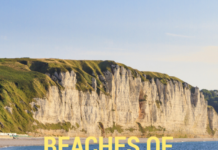Easter Island was discovered on Easter Sunday during the 1600s. It is over 2,000 miles from the nearest population center (Tahiti and Chile,) making it one of the most isolated places on Earth. What’s interesting about this island is that are quite a few moai structures that are on the island. These structures were thought to have been originally carved in a quarry and then moved 11 miles to the destination where they still stand to this day. What’s puzzling is how they actually got moved. These structures are quite heavy and weigh anywhere from 13 tons to 30 tons. There are several theories as to how the moai got to their final destinations.
Rope
One of the most popular theories is that the moai were moved with rope and a little bit of elbow grease. It is thought that by tying rope around them and having many people pull on it that they were able to move the moai the 11 miles that they needed to go. Because of the sheer weight of the structure and the distance, this would have taken quite a few people and a lot of rope.
Fruit and Vegetable Paste
When fruits or vegetables are smashed on the ground they often times create a slippery substance. It is thought that by throwing some fruits or vegetables in front of the moai’s and pushing them over top of them that it could of made the ground slippery enough to easily move the structures. One of the problems with this theory is that it might have been very difficult to go up hill with the ground being so slippery.
Rocks
Another theory involves the use of rocks. Easter Island had a lot of stones and small rocks on the ground at that time. Some scientists have thought that maybe the moai could have been pushed and the rocks and stones would have acted as rollers underneath the structures which would have helped move the moai. The only problem with this theory is that it would have been near impossible to push them 11 miles and not damage them, but yet the moai structures have no visible damage to the bottom of them from the rocks.
We will probably never know how the moai got to be where they are today. The only way to truly understand how great a feat it must have been to move them is to visit the structures yourself to see the sheer size of them. Easter Island is a great place for visitors. It’s a very remote island, but there are plenty of activities available for visitors to participate in. Things like Polynesian festivals and the Ballet Kari Kari are just some of the popular events that attract visitors.
Getting There: Because it is in such a remote area, the best way to travel to Easter Island is either by cruise or tour. Silversea and National Geographic Expeditions both have South Pacific cruises October through December 2014. Some travel companies such as Trafalgar combine Peru with an extension to Easter Island. Another popular trip is the small group discovery 8 day Easter Island and Patagonia. If you wanted to fly from either Chile or Tahiti, expect over a 5 hour flight, and the airfare can be pricey.
Best Time To Travel: We suggest November through February, which is the summer there.








